Identifying foliar nutrient deficiency symptoms of corn early in the growing season can be a valuable tool to identify actual nutrient deficiencies and identify management options to correct these deficiencies. There can be other conditions that make nutrient deficiency symptoms more severe or mimic nutrient deficiencies. These conditions include environmental interactions, herbicide injury, insect feeding, nematodes, compaction, root pruning, product genetics, and other factors. Soil and tissue testing can help determine if a true nutrient deficiency exists. Springtime deficiency symptoms often disappear when the soil becomes warmer and drier and after the plant has developed a larger root system.
What to watch for during routine scouting early in the season
There are five general types of nutrient deficiency symptoms:
- Chlorosis- yellowing due to reduction in chlorophyll – Uniform or interveinal (striped)
- Necrosis- death of plant tissue
- Lack of new growth or terminal growth
- Anthocyanin accumulation (when metabolic processes are disrupted) resulting in reddish (or purple) color
- Stunting with either normal or dark green color or yellowing
Common symptoms for the most important corn nutrients include:
Nitrogen (N): N deficient leaves show up first on the oldest leaves which turn pale or yellowish green and later in the season the leaf can develop an inverted “V” or spear shaped discoloration starting at the tip of the leaf and extending toward the leaf base. If the problem persists the center of the inverted “V” can eventually exhibit necrosis (dead leaf tissue). The deficiency can work its way up the plant from older leaves to newer leaves. (Figure 1).
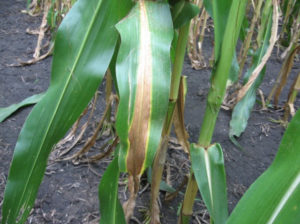
Figure 1. Nitrogen deficient corn leaf exhibiting the inverted “V”.
Phosphorus (P): Typically, P deficient leaves on young plants may have a distinct dark green color with reddish to purplish leaf margins, starting from the tip. The deficiency is observed in the older leaves. Any soil condition that limits root growth (cool temperature, wet or very dry conditions or compaction) can induce the deficiency even with adequate P levels in the soil. (Figure 2).
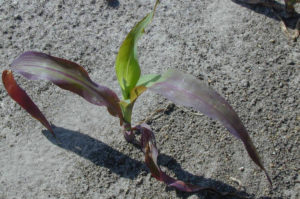
Figure 2. Phosphorus deficient corn plant.
Potassium (K): K deficient plants exhibit leaf edges that can become yellow and eventually turn brown and necrotic on the edge of older leaves. Later in the season K deficiency can cause lodging of the crop because stalks are thin and weakened. (Figure 3).
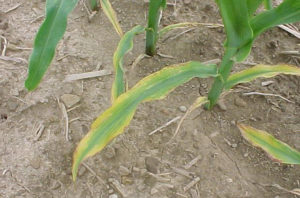
Figure 3. Potassium deficient corn plant.
Sulfur (S): S deficient plants can be identified by the youngest leaves show a yellow striping, particularly at the leaf margin (edge), because S is not easily translocated within the plant. Sulfur deficiency is often confused with an N deficiency during early plant development, but it is the lower leaves (older leaves) that turn yellow when there is an N deficiency (Figure 4).
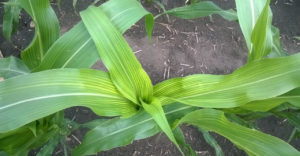
Figure 4. Sulfur deficient corn plant. Photo is provided courtesy of the International Plant Nutrition Institute IPNI and its IPNI Crop Nutritional Deficiency Image Collection, Jashandeep Kaur
Zinc (Zn): Z deficiency can be observed as light green to white stripes between veins (interveinal chlorosis) or as wide bands starting at the base of the leaf and extending toward the tip of the newer leaves. In cases of severe deficiency, new leaves can be almost white. Stunted plants may be apparent because of shortened internodes (Figure 5).
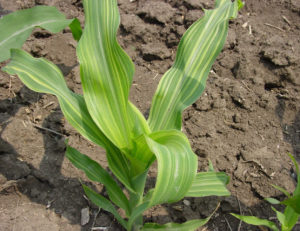
Figure 5. Zinc deficient corn plant. Photo is provided courtesy of the International Plant Nutrition Institute IPNI and its IPNI Crop Nutritional Deficiency Image Collection, M.K. Sharma and P. Kumar
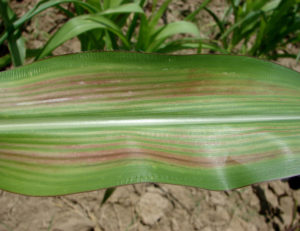
Figure 6. Magnesium deficient corn leaf. Photo is provided courtesy of the International Plant Nutrition Institute IPNI and its IPNI Crop Nutritional Deficiency Image Collection, P. Kumar
Though actual nutrient deficiencies may exist, a reduction in nutrient uptake may also be caused by:
- Soil pH – both low and high soil pH can cause a reduction in nutrient uptake depending on the nutrient (optimum pH nutrient availability for corn ranges from 5.8 to 6.2) (Figure 7).
- Compaction that causes restricted root development that can cause foliar symptoms that look like nutrient deficiency (Figure 8).
- Injured roots from insects, nematodes, diseases, fertilizer burn, or chemicals can look like a nutrient deficiency (Figure 9)
- Reduction in plant metabolism and photosynthesis from cool nights, cloudy weather, and saturated soils
- Warm temperatures after a cool period can cause plants to grow rapidly and may induce temporary deficiencies
- Slow nutrient release from residue
- Soil attributes can cause deficiencies – consider texture, CEC, OM, pH, etc.
- Nutrient interactions – P – Zn (excessive availability of one nutrient can induce a deficiency of another nutrient)
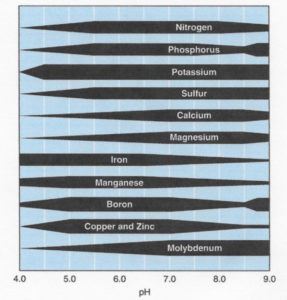
Figure 7. Nutrient availability chart by soil pH. Image courtesy of Dr. Emerson Nafziger, University of Illinois
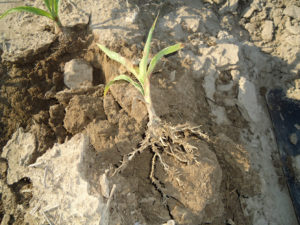
Figure 8. Restricted corn root development can cause a small corn plant to have a nutrient deficient look.
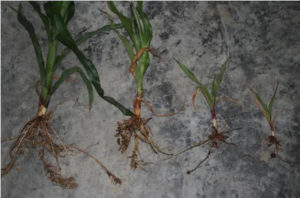
Figure 9. Corn roots injured by nematodes that looks like a nutrient deficiency. Normal corn plant on the left, severely damaged corn plant by nematodes on the right. Photo courtesy of J. Bond, Southern Illinois University
One of the nutrient characteristics that effects where in the plant a nutrient deficiency might show up is, if the nutrient is mobile or not mobile in the plant.
Mobil (translocated nutrients present in the older leaves will move to new leaves to maintain the new growth) nutrients deficient symptoms in the corn plant appear in older leaves first. These nutrients are:
- Nitrogen
- Phosphorous
- Potassium
- Magnesium
Nonmobile (non-translocated nutrients will cause new leaves to show greater deficiency symptoms) nutrients deficient symptoms in the corn plant appear in younger leaves first. These nutrients are:
- Zinc
- Sulfur
- Calcium
- Boron
- Iron
- Manganese
- Copper
- Molybdenum
- Chloride
Impact on Your Crop
The effect of potential yield loss from nutrient deficiencies is first dependent on the severity of the nutrient deficiency but is also dependent on how quickly, if possible, the deficiencies are rectified by more favorable environmental conditions and/or the application of additional nutrients. Season long deficiencies can result in substantial yield loss. As an example, for each day that sulfur is deficient past the first 21 days after emergence there is a potential loss of 1 to 2 bushels per acre per day to the point that total crop failure could be experienced.2 When roots are injured by insects or chemicals and depending on the severity of damage and the time required for new root growth, the potential for yield loss increases.
Managing Nutrient Deficiencies
A nutrient deficiency diagnosis based on deficiency symptoms alone is much less reliable than a diagnosis that is supported by samples that have been analyses by a reputable lab.3 Soil and crop tissue testing can be used to help determine ifa deficiency exists and if it is due to soil nutrient availability, restricted plant uptake, or reduced metabolism. When plants with a suspected nutrient deficiency are sampled, a sample of unaffected plants should also be collected and analyzed to help determine if a nutrient deficiency is the cause. In-season plant tissue testing can be useful in diagnosing nutrient deficiencies in field crops, but it must be used with caution.(4)
It is very important to follow the tissue analysis procedures for the lab doing the tissue test as these procedures can vary by lab. In general, the whole aboveground plant should be tissue tested when the plant is in the seedling stage until it is four inches tall. After the plant is four inches tall, until it reaches the tassel growth stage, test the last entire fully developed leaf below the whorl. Any time after the tassel growth stage test the ear leaf.3 A tissue test, in combination with a soil test, may provide answers as to why plant nutrient levels are high or low. Alone, soil test results can be the most useful for predicting nutrient needs for the following growing season but may not give reliable results for S levels due to potential leaching of this nutrient. Corn responds best when the soil pH levels is around the 6.8 level. Appropriate amounts of lime can increase soil pH and help increase the availability of some plant nutrients on acidic soils.
Understanding nutrient deficiency symptoms in corn (more than just needing more fertilizer)
Nutrient deficiencies are often outgrown when soils become warmer and drier because root growth, microbial activity, and the breakdown of organic material can enhance the release of nutrients. Unrestricted root growth can allow roots to reach water-soluble nutrients such as N and S that may have moved deeper (leached) into the soil profile. Between the V3 to V5 growth stages, while corn plants transition from seed dependency to acquiring energy from photosynthesis, plant appearance can be variable which can be caused by environmental conditions. During the vegetative stages a wait-and-see approach can generally be taken, and tissue samples gathered just prior to silking if symptoms persist. Correcting the problem may not be feasible for the current crop year; however, soil preparation for the next season can include fertilizer applications and lime applications (to adjust pH in acidic soils) based on soil test recommendations, and compaction alleviation or prevention to correct potential nutrient deficiency problems in the crop next year.
Article Link – Foliar Symptoms of Corn Nutrient Deficiencies
Sources:
1 Fernandez, F. 2009. Identifying nutrient deficiencies in corn. the Bulletin. No. 13. Article 6. University of Illinois. http://bulletin.ipm.illinois.edu/print.php?id=1163.
2 Heiniger, R., Crozier, C., Hardy, D., Walls, B., and Reich, R. 2018. Sulfur deficiency symptoms in emerging corn. North Carolina State University. https://corn.ces.ncsu.edu.
3 Stevens, G., Motavalli, P., Scharf, P., Nathan, M., and Dunn, D. 2002. Integrated pest management:
Crop nutrient deficiencies and toxicities. IPM1016. University of Missouri-Columbia. https://extension. missouri.edu/publications/ipm1016.
4 Mallarino, A. 2019. Tissue testing for field Crops requires cautious use and interpretation. Iowa State University Extension and Outreach, Integrated Crop Management. https://crops.extension.iastate.edu/cropnews/2019/06/tissue-testing-field-crops-requires-cautious-use-and-interpretation-0.
Web sources verified 12/20/2012
Legal Statement
Performance may vary, from location to location and from year to year, as local growing, soil and weather conditions may vary. Growers should evaluate data from multiple locations and years whenever possible and should consider the impacts of these conditions on the grower’s fields. Bayer and Bayer Cross are registered trademarks of Bayer Group. All other trademarks are the property of their respective owners. ©2022 Bayer Group. All rights reserved. 5007_S2
